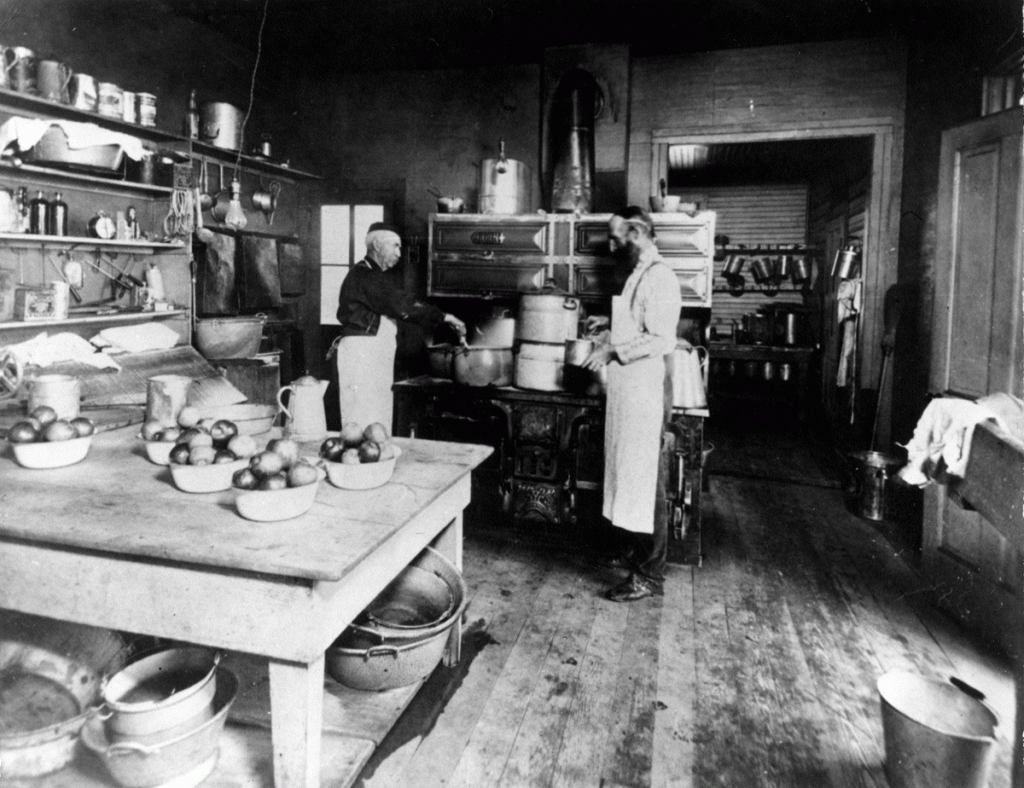Railway spanning the North American continent met in Promontory, Utah on May 10th, 1869. While the Transcontinental Railroad was one of the most celebrated achievements of the 19th century, its completion put thousands of men suddenly out of work, many of them Chinese. Stranded in Utah, without even the return passage to California they had been promised, some of these immigrants simply stayed.
The work had been incredibly dangerous. Reportedly, three laborers died per two miles of track. Other estimates have it that as many as one tenth of the 12,000 Chinese workers on the railroad died while at the job. Additionally, wages had hardly been fair. Pay rate was on a ranked system according to job skill level as well as race, with the Chinese occupying a rung near the bottom of the ladder. While a somewhat lucky few may have remained employed with Union Pacific long enough to lay track toward Park City to transport ore through Coalville in 1880, or to complete the spur coming from Echo the following year, some of the newly unemployed Chinese labor force sought jobs in mining.
The first Chinese immigrants came to find work in the Park City mines in January 1881. Concentrating in neighborhoods mostly made up of bachelors, they joined the community of miners and their families already setting down roots in the area. The previously established mining community viewed the new arrivals as competition for jobs, making companies nervous about hiring them. It was particularly difficult for a Chinese immigrant to find work underground, but both the Sampson and the Grass Creek mines did hire them initially.
Chinese workers in other parts of the western United States were brought in as leverage by mining and railroad companies to replace the white work force when strikes broke out. With fresh, cheaper labor replacing the men who were demanding more rights and higher pay, the strikes fell apart. Since the Chinese also worked for lower wages, it kept every worker’s wage very low, causing even more resentment.
Events finally came to a head with the 1885 Rock Springs Massacre in Wyoming. After the death of 23 men at the hands of white laborers and continuing unrest, the Union Pacific Railroad, which owned and ran the Grass Creek Mine near Park City, fired all Chinese miners, fearing similar events would occur locally. The Sampson Mine also fired all Chinese employees because of fear and violent altercations.
Many of the Chinese residents went on to become business owners, running laundries and restaurants in town. However, some continued to work for the mine companies that dominated the Park City economy by running the boarding houses single miners were required to live in and cooking for the companies’ workers. Whether self-employed or otherwise, in a growing Park City, the Chinese population continued to support the mining community by offering services to miners and their families.

Credit: Park City Historical Society and Museum
Sources:
Chang, Iris. The Chinese in America: A Narrative History. New York: Penguin Books, 2004.
Chung, Sue Fawn. In Pursuit of Gold: Chinese American Miners and Merchants in the American West.
Champaign,IL: University of Illinois Press, 2011.
Goggans, Jan and Aaron DiFranco. The Pacific Region: The Greenwood Encyclopedia of American
Regional Cultures. Santa Barbara, CA: ABC-CLIO, 2004.
Kimball, Gary. Life Under the Bridge & Other Stories of Minorities in Old Park City. Park City, UT:
Tramway Books, 2013.
Rea, Tom. “The Rock Springs Massacre.” WyoHistory.org: A Project of the Wyoming State Historical
Society.http://www.wyohistory.org/essays/rock-springs-massacre